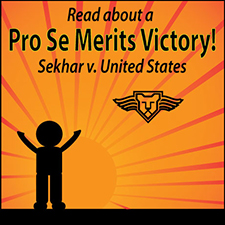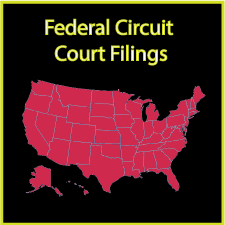Petition of the Month, December 2014:
Dharma Agrawal v. Carlo Montemagno et al.
The Supreme Court Press “Petition of the Month”TM for December 2014 is Dharma Agrawal v. Carlo Montemagno, John Bryan and the University of Cincinnati,. Supreme Court Dkt. No. 14-719, a case arising out of the Sixth Circuit Court of Appeals. The petition was filed by attorneys Robert Gutzwiller and David Clodfelter of the firm Clodfelter and Gutzwiller, located in Cincinnati, Ohio.
Questions Presented:
1. Under 42 U.S.C. § 1983, can a complaint be dismissed for failing to plead a hostile environment theory of discrimination, simply because the words “hostile environment” were not used in the complaint, but where the complaint otherwise details the facts surrounding a work environment hostile to the petitioner?
2. Did the lower court issue an opinion in conflict with Burlington North. & Santa Fe Ry. Co. v. White, 548 U.S. 53, 126 S.Ct. 2405 (2006) when it held that the stripping away of petitioner’s job title, reduction of research space, and diversion of research funds, inter alia, did not constitute either the deprivation of a liberty or property interest or an adverse employment action? Furthermore, in reaching this conclusion, did the lower courts err by making factual inferences against the non-moving party, thus depriving petitioner of his right to a jury trial?
3. When the complaint alleges deliberately false disciplinary charges and suspension of professor’s pursuit of grants, disruption of professor’s research responsibilities and his physical wellbeing, and professor’s forced expenditure of over $70,000 for attorney’s fees in defending such charges, can a lower court’s determination of no substantive due process claim stand?

Has the federal system quietly barred the courts to employment discrimination claims? Given the growing number of Supreme Court petitions addressing this question, the canary in the coalmine may already have been dead for quite a while. The case of, Dharma Agrawal v., Carlo Montemagno, John Bryan and the University of Cincinnati, filed by Cincinnati attorneys Robert Gutzwiller and David Clodfelter stakes this claim, arguing that the Sixth Circuit has built a summary judgment firewall that is not permitting cases with genuine issues of fact to go to the jury. Rather, the case argues, Sixth Circuit judges are dismissive of claims, analyzing them piecemeal, refusing to evaluate them as patterns of continuous conduct. According to the petition, Petitioner Dr. Dharma Agrawal is a decorated computer scientist who was recruited with an enticing package of compensation and resources to the University of Cincinnati. However, after his arrival, the University had regrets, and reduced his research budget and the number of graduate students he could hire, moved him to smaller office, etc. The Sixth Circuit deemed these actions not to be a taking of property and held they could not be viewed as an adverse job action, this despite the Supreme Court's ruling in Burlington North. & Santa Fe Ry. Co. v. White which held that reassigning a person to less desirable job assignment was an adverse job action. The Sixth Circuit also held that he Complaint was defective because it simply stated the facts, and did not use the legal term "hostile work environment," despite the complaint's description of numerous factors that a reasonable person would deem to be hostile. |

| Thank you for discussing the Dharma Agrawal case with us. It appears to be yet another in a long line of employment discrimination cases, which although properly pleaded, was taken out of the hands of the jury and decided at summary judgment. You make the point in your petition that the Sixth Circuit has become a graveyard for these cases. Can you describe what you have observed? | |
 | In the 1980s the trial judges in the Southern District of Ohio often saw discrimination cases as having issues of fact, if a plaintiff could simply present evidence on discrimination issues or on the basis of having a factual or testimonial showing, i.e. two differing versions of facts related to the terms and conditions of employment. In that period, defense counsel often did not ask the court for summary judgment, because plaintiffs’ usually had a showing that the defense saw as factually significant. Many cases also settled, often with District Court encouragement. Time passed into the 1990s, especially after Congress passed the 1991 Civil Rights Act., and suddenly the judicial attitude was to permit only the most perfect cases to reach the jury. Settlements stopped happening because defense counsel would offer very little until after the Court had ruled on a Rule 56 Motion for Summary Judgment. Disputed facts were interpreted in such a way that virtually all claims became susceptible to “judgment as a matter of law.” Still cases reached the jury and with substantial verdicts. McDonnell Douglas v. Green, 411 U.S. 792 (1973), which had produced many jury trials in the 1980s, began being interpreted in the 1990s as a way to short circuit trials by claiming the four elements had not been met. Originally, of course, the prima facie case standard had not been meant to be “onerous.” However, prong four evidence for the McDonnell Douglas test, (evidence which inferred discrimination) was refused by Courts, because the comparisons needed for the evidence to be relevant were rejected. A case of this sort in the Sixth Circuit was Mitchell v. Toledo Hospital, 964 F.2d 577 (6th Cir. 1992). The employee sought to be used by plaintiff’s counsel for comparison was excluded because the comparison was not exact enough. Judge Jones’ dissent highlights the lengths that the majority went to exclude the comparable employee from consideration. The case became widely cited especially by defense counsel and the end of factual disputes began. It took almost ten years before Judge Moore’s opinion in Ercegovich v. Goodyear Tire Rubber Company, 154 F. 3d 344 (6th Cir. 1998) sought to stem the tide created by Toledo Hospital. Several other ways of satisfying prong four were destroyed in the process, e.g. inferences of discrimination because of violations of investigatory protocol by management. In the early 1980s this latter inference was available. See Blackwell v. Sun Electric Corp., 696 F.2d 1176 (6th Cir. 1983). At this point, the District Court and the Court of Appeals have supported one another with their idea that there are no factual issues in any case, no matter what the Seventh Amendment says. |
| Your Client, Dr. Agrawal has a quite an impressive background. Can you share his accomplishments and describe the courtship he had with the University of Cincinnati? | |
|
|
| How did his employment conditions change after he had joined the University? | |
|
|
Dr. Agrawal was also brought up on some disciplinary matters by the University. What did he face and what was the outcome? |
|
|

| How did the case proceed through the courts? Why was it removed from State Court to Federal Court? | |
|
|
| However, both the district and the circuit found that Dr. Agrawal had not suffered an adverse employment. How does this meld with the existing state of the law on adverse employment conditions? | |
 |
|
 At the time I drew the complaint, some of the discriminatory treatment the Indians in the department suffered had not even happened yet, or was not apparent. The complaint did say that the discrimination was continuing, and for much of the discriminatory history of the case, discrete acts were simply not there. The lower courts’ refusal to allow us to use evidence beyond the two year statute, despite National R.R. PassengerCorp. v. Morgan, 536 U.S. 101 (2002), on the basis of what legal conclusions were set forth in the complaint constitutes a “form over substance” proposition. - Robert Gutzwiller
At the time I drew the complaint, some of the discriminatory treatment the Indians in the department suffered had not even happened yet, or was not apparent. The complaint did say that the discrimination was continuing, and for much of the discriminatory history of the case, discrete acts were simply not there. The lower courts’ refusal to allow us to use evidence beyond the two year statute, despite National R.R. PassengerCorp. v. Morgan, 536 U.S. 101 (2002), on the basis of what legal conclusions were set forth in the complaint constitutes a “form over substance” proposition. - Robert Gutzwiller| The District and Circuit also had an issue with the Complaint, stating that it was not a Section 1983 pleading because it never stated the words “hostile environment.” What did the complaint state and how do you believe it met the requirements of a prima facie pleading? | |
 |
|
| If the Sixth Circuit is not hospitable to these cases, do you see it as a nationwide trend? Do you see other circuits where these cases can go to trial? | |
| Because of the jury right under 42 U.S.C. §§1981 and 1983, as well as the Civil Rights Act of 1991 making juries available on Title VII, some circuits have sought methods to control the number of jury trials. The Ninth and the Seventh seem better on this issue. The Seventh Amendment, however, is a cornerstone for justice to the American people. The Sixth Circuit seems, at times, ambivalent towards this issue. | |
| We’d like to ask you about your experience working with the Supreme Court Press, and Specifically the Editor process. | |
| The editorial process was impressive, and their conceptual and legal suggestions during the drafting process were invaluable in completing the petition in a timely and effective fashion. | |
| Mr. Clodfelter and I were very pleased with the help we received from Supreme Court Press. |



---Bryan-Krumm.png)
---ZoeSpencer.png)


